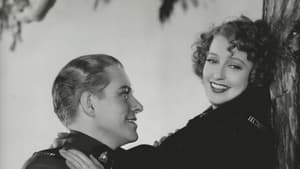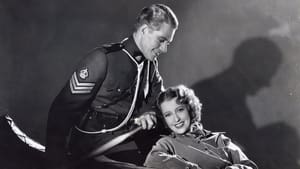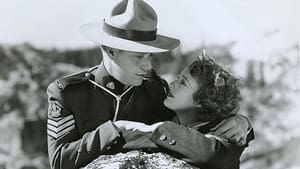Contact: info@alwanfilm.com
Video Sources 0 Views
- Watch trailer
- Rose Marie 1936 Colorized


Synopsis
Table of Contents
ToggleRose Marie 1936 Colorized Review: A Classic Musical Romance in Color

Introduction
Few films capture the magic of 1930s Hollywood musicals quite like Rose Marie (1936). Directed by W.S. Van Dyke and featuring Jeanette MacDonald and Nelson Eddy, Rose Marie is a sweeping romance set against the rugged Canadian wilderness. Originally released in black and white, Rose Marie was later colorized, offering audiences a refreshed, vibrant take on this beloved classic. This review will explore the film’s artistic and technical achievements, including its iconic cast performances, the impact of its colorization, and its influence on future Hollywood musicals. We’ll also discuss the debates surrounding film colorization and the historical significance of this musical classic.
Check The Full Colorized Movies List
Check Our Colorized Movies Trailer Channel
Understanding Rose Marie 1936 Colorized: Director, Cast, and Genre
Director’s Vision and Achievements
W.S. Van Dyke, known for his directorial speed and skill, was at the helm of Rose Marie (1936). Van Dyke was a versatile director, recognized for classics like The Thin Man series, and he brought his distinctive touch to Rose Marie, combining grand romance with lush musical sequences. His work was instrumental in defining the film’s atmosphere and pacing, balancing lighthearted musical numbers with dramatic plot developments. Van Dyke’s direction gave Rose Marie a timeless charm that has kept it relevant to audiences for nearly a century, shaping the romantic musical genre with his keen sense of storytelling and visuals.
The Iconic Performance of Actors
The cast of Rose Marie shines, particularly the dynamic pairing of Jeanette MacDonald as Rose Marie La Flamme and Nelson Eddy as Sergeant Bruce. MacDonald and Eddy, one of cinema’s most beloved screen couples, bring palpable chemistry to the film. MacDonald’s portrayal of the opera singer Rose Marie is full of poise and complexity, while Eddy’s earnest performance as the dashing Mountie Bruce Grant adds warmth and sincerity. Their harmonious duets, particularly the iconic “Indian Love Call,” showcase the strength of their partnership and the actors’ unique vocal talents, establishing Rose Marie as one of the most memorable musicals of its era.
Exploring the Genre
Rose Marie (1936) is a musical romance, a genre that enjoyed immense popularity in Hollywood’s Golden Age. Audiences in the 1930s craved escapism, and musicals offered a blend of romance, adventure, and show-stopping performances. Rose Marie became an exemplary piece of this genre, set against an adventurous and rugged Canadian backdrop, allowing audiences to revel in a classic tale of love found in the wilderness. The film’s balance of romance and musical interludes helped establish it as a timeless entry in the musical romance genre.
Exploring the World of Rose Marie 1936 Colorized: Plot and Characters
Detailed Synopsis
The plot of Rose Marie (1936) centers on Rose Marie La Flamme, a famed opera singer whose life takes a dramatic turn when she travels to the Canadian Rockies in search of her troubled brother, Jack, who is on the run. Rose Marie, determined to find him, ventures into the wilds of Canada and soon crosses paths with Sergeant Bruce, a Canadian Mountie who is also in pursuit of Jack due to his criminal activities.
As Rose Marie and Bruce’s journeys converge, they form an unlikely bond, beginning with playful banter and leading to a blossoming romance. The tension between Rose Marie’s devotion to her brother and her growing feelings for Bruce adds depth to the story. Eventually, Rose Marie is forced to choose between protecting her brother and following her heart. This emotionally charged plot, enhanced by MacDonald and Eddy’s powerful performances, makes Rose Marie a compelling exploration of love, family loyalty, and sacrifice.
Complex Characters and Memorable Relationships
The characters in Rose Marie are layered and complex, bringing a sense of realism to the film’s romantic themes. Rose Marie, played by MacDonald, is more than a singer; she’s a woman struggling with the responsibilities of family and her desire for love. Bruce, portrayed by Eddy, is a compassionate yet duty-bound officer, adding moral conflict to his romance with Rose Marie. Their characters evolve as the story progresses, showing the strength and vulnerability in each, and giving the film its emotional resonance.
The Art of Film Colorization
Understanding the Process
Colorization of black-and-white films involves applying color to each frame, usually digitally. Although the process has been refined in recent decades, early colorization often required artists to carefully select colors that aligned with historical settings and costumes, applying them frame by frame. For Rose Marie (1936), this required delicate attention to detail in the film’s natural landscapes, costumes, and the complex lighting effects used in musical numbers.
Development of Colorization Techniques
Initially, colorization methods involved hand-tinting frames or using techniques like tinting entire scenes, though these early processes produced limited results. Advances in digital colorization now make it possible to achieve more natural color tones and accurate shades, enhancing the visual richness without detracting from the film’s original artistry. For Rose Marie, colorization allowed viewers to appreciate the Canadian wilderness, costumes, and set designs in a new and immersive way.
Early Colored Films: A Brief History
Emergence of Colored Techniques in Film
The 1930s was a transformative period in film technology, marked by significant advancements in colorization. While early films relied on rudimentary coloring methods, the introduction of Technicolor brought vibrant, multi-hued visuals to Hollywood. Rose Marie (1936), like many films of its time, was initially shot in black and white but later colorized to cater to audiences seeking a fresh cinematic experience.
Technicolor involved using three separate film strips to capture colors accurately, resulting in a rich, layered image that changed the cinematic landscape. Though Rose Marie was not originally produced in Technicolor, the process of colorizing it decades later allowed audiences to experience the film as though it were part of this early color movement.
Rose Marie 1936 and Its Early Colored Version
Decision to Release a Colorized Version
The colorization of Rose Marie was part of an initiative to bring classic films to a broader audience by updating their visual appeal. Adding color to this 1936 classic was seen as a way to enhance its romance and adventure, showcasing the natural landscapes and elaborate costumes that had previously been limited to shades of gray. The colorized version of Rose Marie brings new life to the scenery and costumes, immersing viewers in the romantic charm of the Canadian wilderness.
Impact on the Visual Narrative
The addition of color to Rose Marie gives the film a new level of vibrancy. The lush Canadian landscapes, seen in shades of green and blue, and the bright red uniform of the Mountie Sergeant Bruce add visual depth to the story. The colorization enhances the audience’s experience, bringing a sense of realism to the film’s settings. However, some purists argue that colorizing the film changes its original mood, emphasizing the adventurous elements over its more intimate, emotional tones.
The Debate Over Film Colorization
Controversy and Artistic Integrity
The colorization of classic black-and-white films has sparked significant debate within the film community. Some argue that colorization alters the director’s original vision, detracting from the authenticity of the era in which the film was made. Critics of colorization believe that black-and-white films should be preserved as they were initially intended to retain historical and artistic integrity.
On the other hand, proponents of colorization argue that the process can bring classic films to a modern audience that may be less accustomed to black-and-white cinematography. In the case of Rose Marie, colorization introduces the film to new viewers who can appreciate its story and performances within a more visually engaging format.
Examining Rose Marie 1936 as an Early Colored Film
Enhancement vs. Original Aesthetic
Colorizing Rose Marie (1936) has given it a renewed visual appeal that enhances its scenic and romantic elements. The color adds a sense of life to the wilderness, the costumes, and the atmospheric lighting used in the film’s musical numbers. For some viewers, these additions enhance the overall experience, while others prefer the original black-and-white version, believing that the monochrome palette adds a timeless quality to the romance and drama.
Influence and Legacy: Rose Marie 1936 Colorized’s Impact on Cinema
Shaping the Musical Romance Genre
Rose Marie (1936) was pivotal in shaping Hollywood’s approach to musical romances. Its success demonstrated the viability of combining romance, music, and drama in a way that would become a blueprint for future musicals. The MacDonald-Eddy pairing inspired other films to explore similar romantic dynamics, with their chemistry setting the standard for on-screen couples in Hollywood musicals.
Influence on Later Musicals
The legacy of Rose Marie extends beyond its own story, inspiring future musicals to incorporate scenic and adventurous elements into romantic narratives. The film’s blend of romance, music, and wilderness settings can be seen in later works, from the grand musical numbers of The Sound of Music to the adventurous romantic elements in Disney films. Rose Marie laid the groundwork for the genre, leaving a lasting influence on Hollywood musicals.
Director’s Cinematic Legacy: Beyond Rose Marie 1936 Colorized
W.S. Van Dyke’s Contribution to Cinema
W.S. Van Dyke’s work on Rose Marie is one of many highlights in his illustrious career. Known for his efficiency, Van Dyke directed a diverse range of films, including San Francisco (1936) and Manhattan Melodrama (1934), which showcased his ability to handle various genres. His contributions to the romantic musical genre, along with his skillful storytelling and efficient direction, have left a lasting legacy in Hollywood.
Themes Explored in Rose Marie 1936 Colorized
Romance, Duty, and Sacrifice
Rose Marie (1936) delves into themes of romance, duty, and sacrifice, exploring the moral dilemmas faced by its characters. Rose Marie’s struggle to protect her brother and Bruce’s duty to uphold the law create a tension that makes their romance more complex and poignant. These themes resonate with audiences, adding layers of emotional depth to the story.
Reception and Controversy Surrounding Rose Marie 1936 Colorized
Initial Reception and Colorization Debate
Rose Marie (1936) received acclaim upon its release, with audiences captivated by MacDonald and Eddy’s performances. However, the colorization of the film sparked controversy, with some purists arguing that the addition of color detracted from its historical authenticity. Despite this, the colorized version has garnered a new fan base, allowing the film to reach a wider audience.
Where to Watch Rose Marie 1936 Colorized Online
Rose Marie (1936) is available on streaming platforms like Amazon Prime Video and Turner Classic Movies, offering both the original black-and-white and colorized versions. The film can also be found on DVD and Blu-ray, allowing audiences to experience this classic musical romance in their preferred format.
FAQs About Rose Marie 1936 Colorized
Q: Who directed Rose Marie (1936)?
A: W.S. Van Dyke directed Rose Marie (1936), bringing his unique touch to this romantic musical.
Q: What are some themes explored in Rose Marie?
A: Rose Marie explores themes of romance, duty, family loyalty, and sacrifice.
Q: Where can I watch Rose Marie (1936)?
A: The film is available on popular streaming platforms like Amazon Prime Video and Turner Classic Movies, as well as on DVD and Blu-ray.
Conclusion
Rose Marie (1936) stands as a timeless example of the musical romance genre, showcasing the talents of Jeanette MacDonald and Nelson Eddy under the skilled direction of W.S. Van Dyke. The colorized version has added a new layer of appreciation for audiences, though it has also sparked debate about artistic authenticity. Whether enjoyed in black and white or in color, Rose Marie continues to captivate viewers with its romance, music, and breathtaking settings, solidifying its place in the legacy of classic Hollywood cinema.















